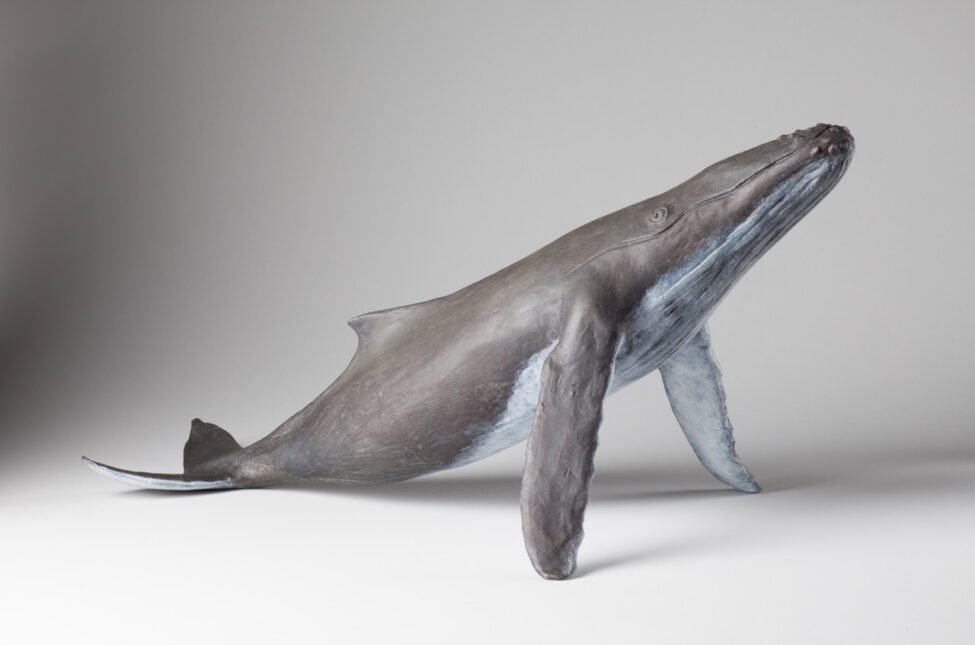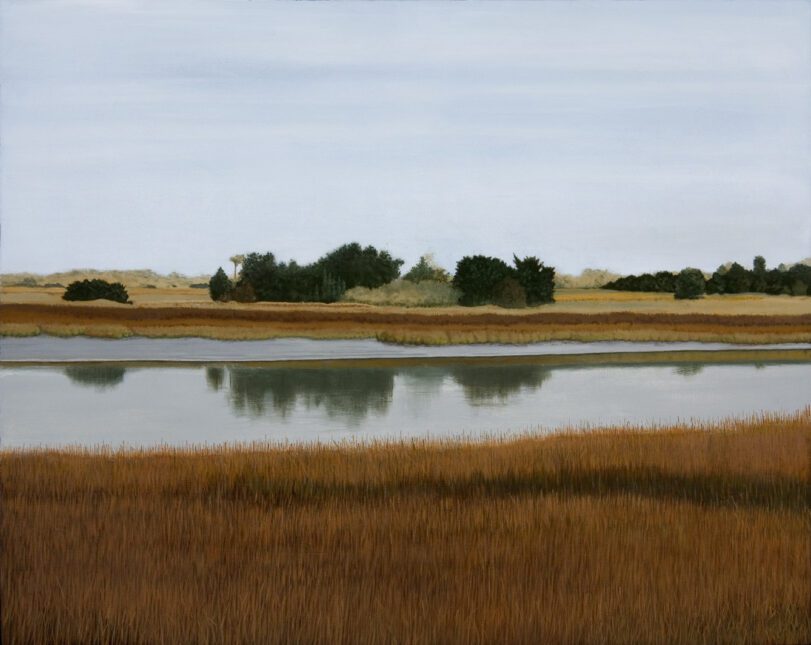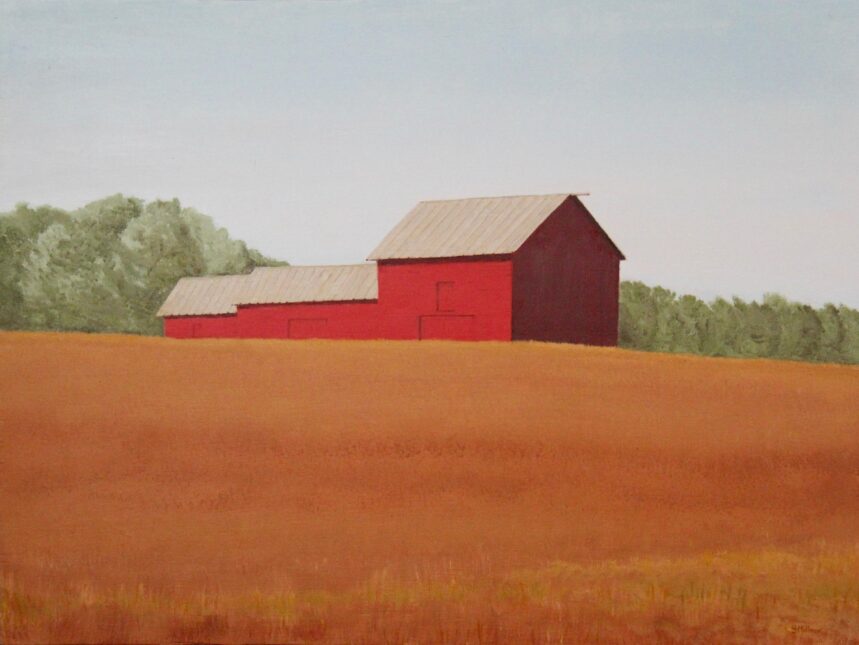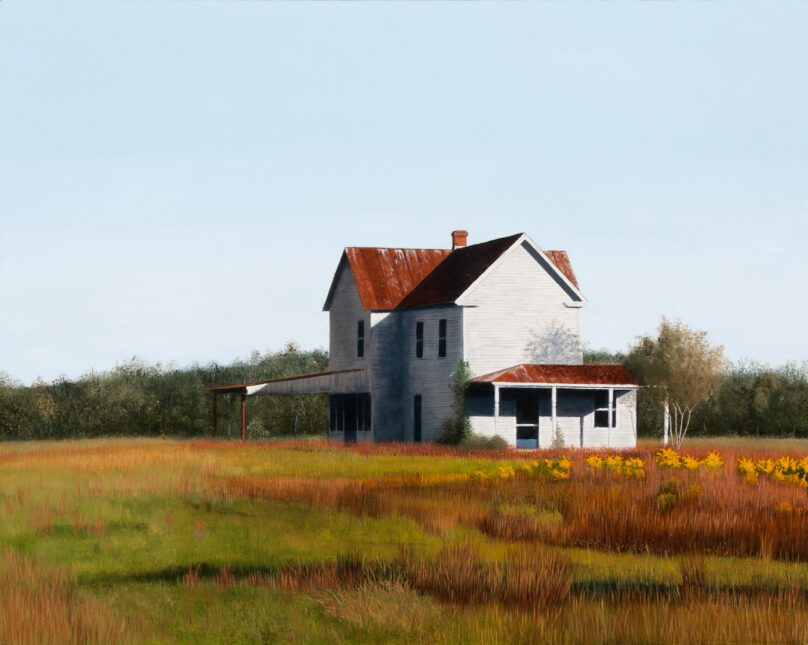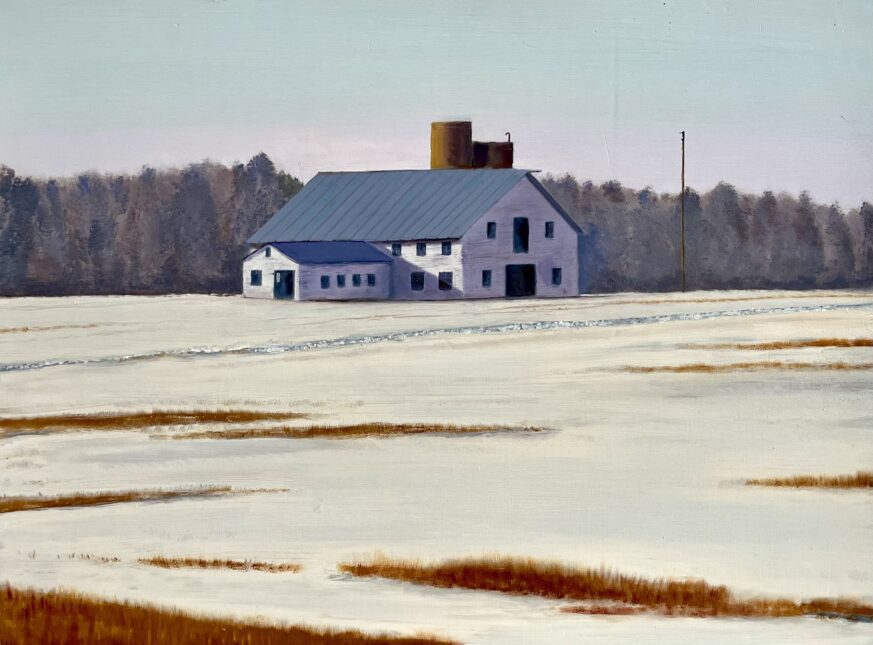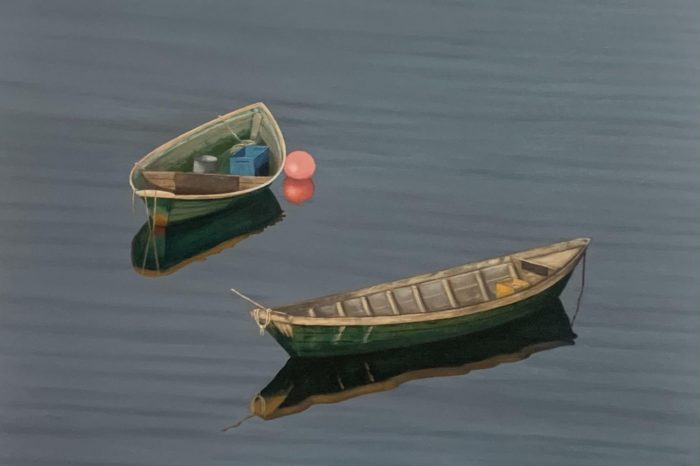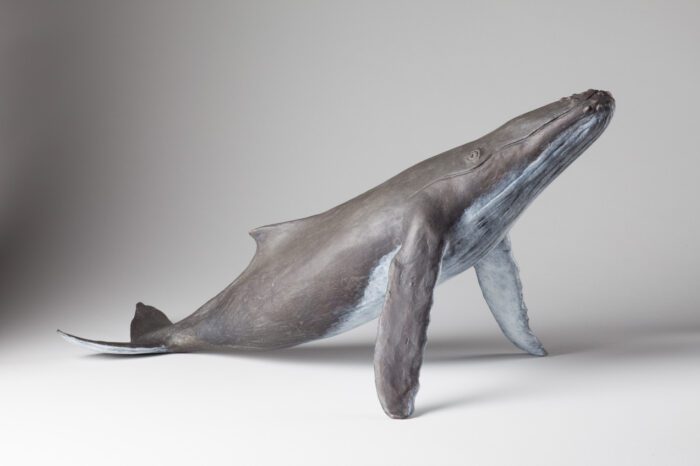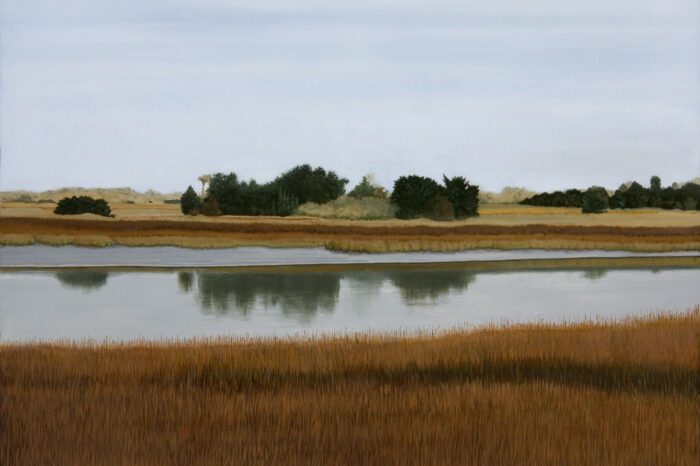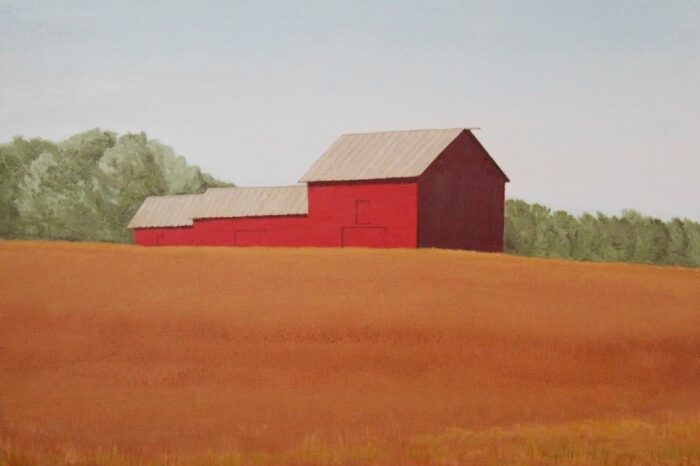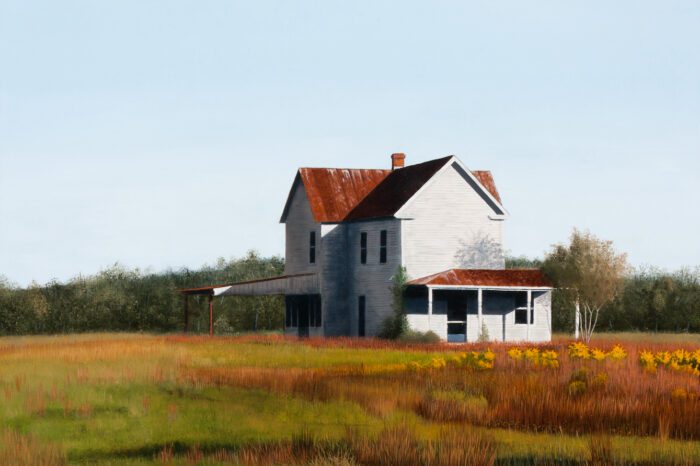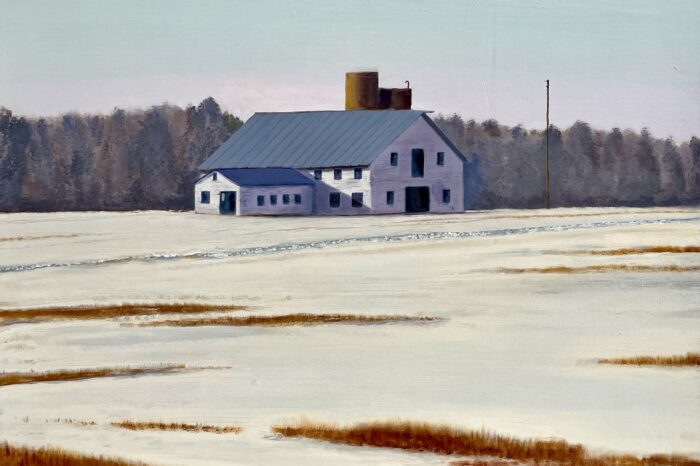B. Millner, having exhibited his sculpture for more than fifteen years, has begun to give equal emphasis to his oil paintings. His bronzes reflect his fascination with the human figure, which he uses to portray both whimsy and emotion. His wildlife images usually depict the subject in suspended motion. His paintings depict interior and exterior scenes infused with warm light and deep shadow. These works suggest solitude and mystery. Millner’s work has been exhibited from Maine to Mississippi and the Caribbean and collected internationally.
Born 1939 Charlotte, NC
EDUCATION
MBA University of North Carolina
BA Davidson College, North Carolina
SELECT SOLO EXHIBITIONS
2023 Courthouse Gallery, Ellsworth, ME (scheduled)
2021 Courthouse Gallery, Ellsworth, ME
2020 Courthouse Gallery, Ellsworth, ME
2018 Page Bond Gallery, Richmond, VA
2014 Page Bond Gallery, Richmond, VA
2013 Patricia Ladd Carega Gallery, Center Sandwich, NH
2012 Page Bond Gallery, Richmond, VA
2009 Page Bond Gallery, Richmond, VA
2007 Page Bond Gallery, Richmond, VA
2005 White Canvas Gallery, Richmond, VA
2004 Devonish Gallery, Anguilla, BWI
2003 Cross Mill Gallery, Ashland, VA
2002 Cudahy’s Gallery, Richmond, VA
2002 E. Taylor Greer Gallery, Ferrum, VA
2000 Cudahy’s Gallery, Richmond, VA
2000 Cross Mill Gallery, Ashland, VA
1994 The Mabey Gallery, Richmond, VA
SELECT GROUP EXHIBITIONS
2020/22 Courthouse Gallery, Ellsworth, ME
2020 The Portland Show, Greenhut Gallery, Portland, ME
2020 The Portland Show, Greenhut Gallery, Portland, ME
2018 Juried Exhibition, Roux and Cyr International Gallery, Portland, ME
2016 Audubon Artists Annual Exhibition, New York, NY
2016 “Swarm” Juried Exhibition, Annmarie Sculpture Garden and Art Center,
Solomons Island, MD
2014 National Sculpture Society Annual Exhibition, Brookgreen Gardens, SC
2012-2022 Bayview Gallery, Brunswick, ME
2012-2015 Patricia Ladd Carega Gallery, Center Sandwich, NH
2011 “Spectrum”, Page Bond Gallery, Richmond VA
2004-2008 White Canvas Gallery, Richmond, VA
2004-2005 Martha Mabey Art Gallery, Biloxi, MS
2004 Earl McGrath Gallery, New York, NY
2005 Washington Sculptors Group, Juried Exhibition, Washington, DC
2002-2008 Devonish Gallery, Anguilla, BWI
2002 Washington Sculptors Group, Juried Exhibition, Washington, DC
2002 Red Piano Gallery, Hilton Head Island, SC The Mabey Gallery “Points of View”
2002-2003 Kane Marie Fine Arts Gallery, Virginia Beach, VA
2000-2003 Cudahy’s Gallery, Richmond, VA
2000-2004 Leighton Gallery, Blue Hill, ME
1998 Shockoe Bottom Art Center, Juried Exhibition, Richmond, VA
1998 Left Bank Gallery, The Cloister Exhibition, Sea Island, GA
1997 Left Bank Gallery, The Cloister Exhibition, Sea Island, GA
1995 Piedmont Arts Association, “A Virginia Portfolio” Exhibition, Martinsville, VA
1993 The Trillium Gallery, Urbanna, VA
SELECT PUBLIC COLLECTIONS
Capital One Financial Corporation
Lewis Ginter Botanical Garden
Dominion Resources Corporation
Federal Reserve Bank of Richmond
Longwood University
Union Theological Seminary
Virginia Commonwealth University Health System
Wells Fargo Securities
“Maybe these buildings fascinate me because they represent all of us; maybe they are symbols of our own impermanent status here on earth—metaphors of our transient lives and inability to stop the passing of time.” —From Ruin by Brian Vanden Brink
I was first drawn to the theme of this exhibition, “Abandoned,” by a tall, old farmhouse in Middlesex County, Virginia, that I drove by a dozen years ago. It sat in a weed-choked field, but was a stately, dignified presence despite its peeling siding and rust streaked tin roof. I did a quick painting of it, which has hung in my studio ever since. Then, three years ago, I drove by the old house again, and found myself dismayed by its transformation. It had been re-roofed and re-clad in beige vinyl siding. The field was mowed and a new driveway led to the house. The old bones were still there, but the house could have stood in any suburban subdivision. It had lost its character. I began to notice other abandoned structures and realized that three fates awaited them: they would fall down, be demolished, or, worse, rehabbed in plastic. I did a more careful rendering of the old Middlesex house, based on photos I had taken of it while in its state of faded elegance, and started to look for more. My criteria were simple. The structures had to be abandoned, showing no sign of human occupancy. I wanted them to have presence, either architecturally or by virtue of their topographical setting. I cared more for the look and feel of the structures than for their history, so I did no research into their provenance. In fact, their air of mystery itself was appealing to me. These subjects are located mainly in Virginia and New England, the two locations where I do all my painting. Their original uses were primarily residential, commercial, and agricultural. I learned quickly that there are few eligible structures in coastal locations, simply because the underlying real estate is usually too valuable to permit their existence. About halfway through this project, I stumbled upon a wonderful photographic book called Ruin by Brian Vanden Brink. I was so intrigued that I tracked down the author in Camden, Maine, and asked him for directions to some of his subjects. He reminded me that his photos were ten to fifteen years old, and the buildings weren’t likely to remain in the state that his images portrayed. I found only two of them, and, sure enough, one was rubble and the other had been rehabbed. So there is the lesson: these old ruins are on the slippery side of life. They deserve to be recorded somehow.
-
Sixteen Sixteen
October 07, 2016 — October 29, 2016
-
Nancy Murphy Spicer & Swelter
July 14, 2016 — September 02, 2016
-
B. Millner & Lee Saloutos
September 05, 2014 — September 27, 2014
-
Tim O’Kane & Next
December 13, 2013 — January 11, 2014
-
Peri Schwartz & B. Millner
March 02, 2012 — March 30, 2012
-
Robin Braun & B. Millner
October 01, 2009 — October 29, 2009
-
GOOD WILL
DECEMBER 7, 2023 - JANUARY 22, 2024

